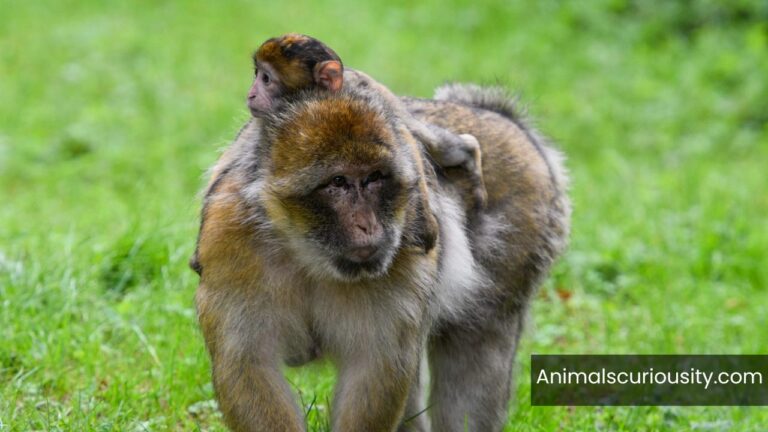Quail In Michigan (1 Species to Know)
As the sun begins to rise over the rolling fields of Michigan, a soft rustle in the underbrush might just signal a hidden treasure: the elusive quail. These charming birds, with their distinctive cooing and delicate plumage, are more than just a sight for sore eyes; they represent a piece of our state’s rich natural tapestry.
Once common across Michigan’s farmlands and forests, quail populations have dwindled, leaving birdwatchers and nature enthusiasts yearning for glimpses of these feathered gems.
But hope is not lost! Conservation efforts are on the rise, rekindling interest in quail habitats and their ecological importance. From seasoned hunters to curious families seeking outdoor adventures, discovering quail in Michigan offers an exciting opportunity to connect with nature while promoting biodiversity.
Join us as we explore the fascinating world of quail in Michigan, where history, habitat restoration, and human enthusiasm weave together into a vibrant narrative of resilience.
Species of Quail In Michigan
There are is only specie of quail that exist in Michigan:
- Northern Bobwhite
Northern Bobwhite
Scientific Name: colinus virginianus

Identification
The Northern Bobwhite, a charming and elusive bird, adds a unique flair to Michigan’s diverse wildlife. Not just an auditory delight with their characteristic “bob-white” call, these quails also sport distinct physical traits that make them easy to identify. Males showcase rich brown bodies with striking white throat patches and bold black stripes on their heads, while females possess more muted tones, adorned subtly by fawn-colored speckles that perfectly blend into underbrush, a stunning example of nature’s clever camouflage.
Also read: Explore Cormorants In Michigan.
Range
The Northern Bobwhite, a plump and lively quail species, once thrived across Michigan’s fields and woodlands. Their haunting calls, a melodious Bob-white!—echoed through the rural landscapes during warmer months. Urbanization and habitat loss have dramatically reduced their numbers, sparking interest among conservationists who seek to restore this quintessential sound of nature to the state.
Despite these challenges, recent initiatives focused on sustainable land practices are breathing new life into quail populations. By reintroducing native grasses and managing brushland environments, researchers aim to create ideal nesting grounds.
Diet and Foraging Habits
Northern Bobwhites, often referred to simply as quail, display a fascinating array of foraging behaviors that reflect their adaptability in Michigan’s diverse habitats. These small gamebirds primarily thrive on a diet of seeds and grains; they have been observed diligently scratching the ground to uncover hidden treasures like insects and vegetation. Interestingly, seasonal changes greatly influence their foraging habits, during spring and summer, quail capitalize on succulent greens and protein-rich insects essential for nurturing growing chicks.

Also read: Are There Badgers In Michigan?
One striking aspect of Northern Bobwhite’s behavior is their social foraging strategy. Quail are known to forage in coveys, utilizing their collective vigilance to detect predators while simultaneously finding food sources more efficiently. This harmonious social dynamic allows them to explore various terrain, from grasslands to woodland edges, maximizing their nutritional intake while minimizing risk.
Where to Find This Bird
In the heart of Michigan’s lush landscapes, the Northern Bobwhite quail thrives in a variety of habitats. These charming birds prefer areas with a mix of open fields, shrubby borders, and nearby woodlands, making places like the Lower Peninsula’s agricultural expanses or the edges of state parks ideal for birdwatching. Whether traversing grasslands or exploring road shoulders near farmland, keen observers might spot their distinctive bobbing heads peeking through tall grass.
Readmore: Explore CRANES In MICHIGAN.
Conclusion
Quail in Michigan represent both a unique ecological asset and a challenge for conservation efforts. Their decline highlights the need for habitat restoration and responsible management practices to ensure their survival. Engaging local communities in quail conservation can foster a deeper appreciation for these birds and their role in the ecosystem. By promoting awareness and supporting sustainable initiatives, we can help secure a future for quail in our state. Let’s work together to protect this cherished species for generations to come.
FAQS
Are there quail in michigan?
Yes, there are quail in Michigan, primarily the Northern Bobwhite species. Historically, these birds were more widespread across the state, but their populations have declined due to habitat loss and changes in land use.
What bird is Michigan known for?
Michigan is known for several birds, but one of the most iconic is the American Robin. This cheerful songbird, with its distinctive red-orange breast, is often considered a harbinger of spring in the state. Robins are commonly seen hopping around lawns and gardens, searching for worms and insects, making them a familiar sight for residents.
What is the fastest bird in Michigan?
The fastest bird in Michigan is the peregrine falcon. Known for its incredible speed, it can reach over 240 miles per hour during its characteristic hunting stoop (high-speed dive). This makes it not only the fastest bird in Michigan but also the fastest animal on the planet.
What is Michigan’s national animal?
Michigan’s national animal is the white-tailed deer. This iconic species is not only a vital part of Michigan’s wildlife but also holds significant cultural and recreational importance in the state. The white-tailed deer can be found throughout Michigan, thriving in its diverse habitats, from forests to fields.
- Discover Top 9 White Birds in Florida (With Pictures) - November 7, 2024
- Discover Top 16 Black Birds In South Carolina (With Pictures) - November 6, 2024
- Explore Top 18 Most Famous Yellow Birds in Arizona (With Pictures) - November 5, 2024







